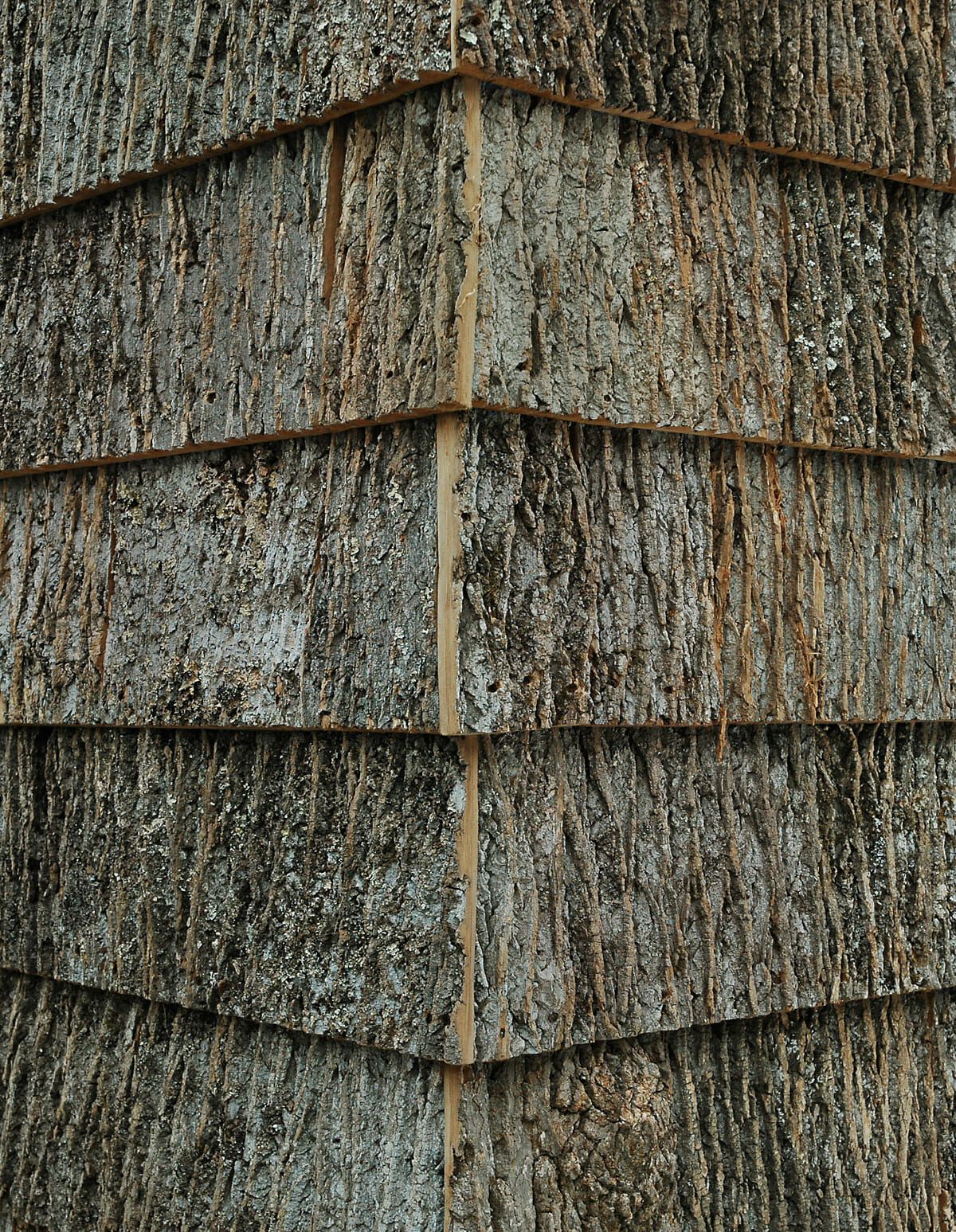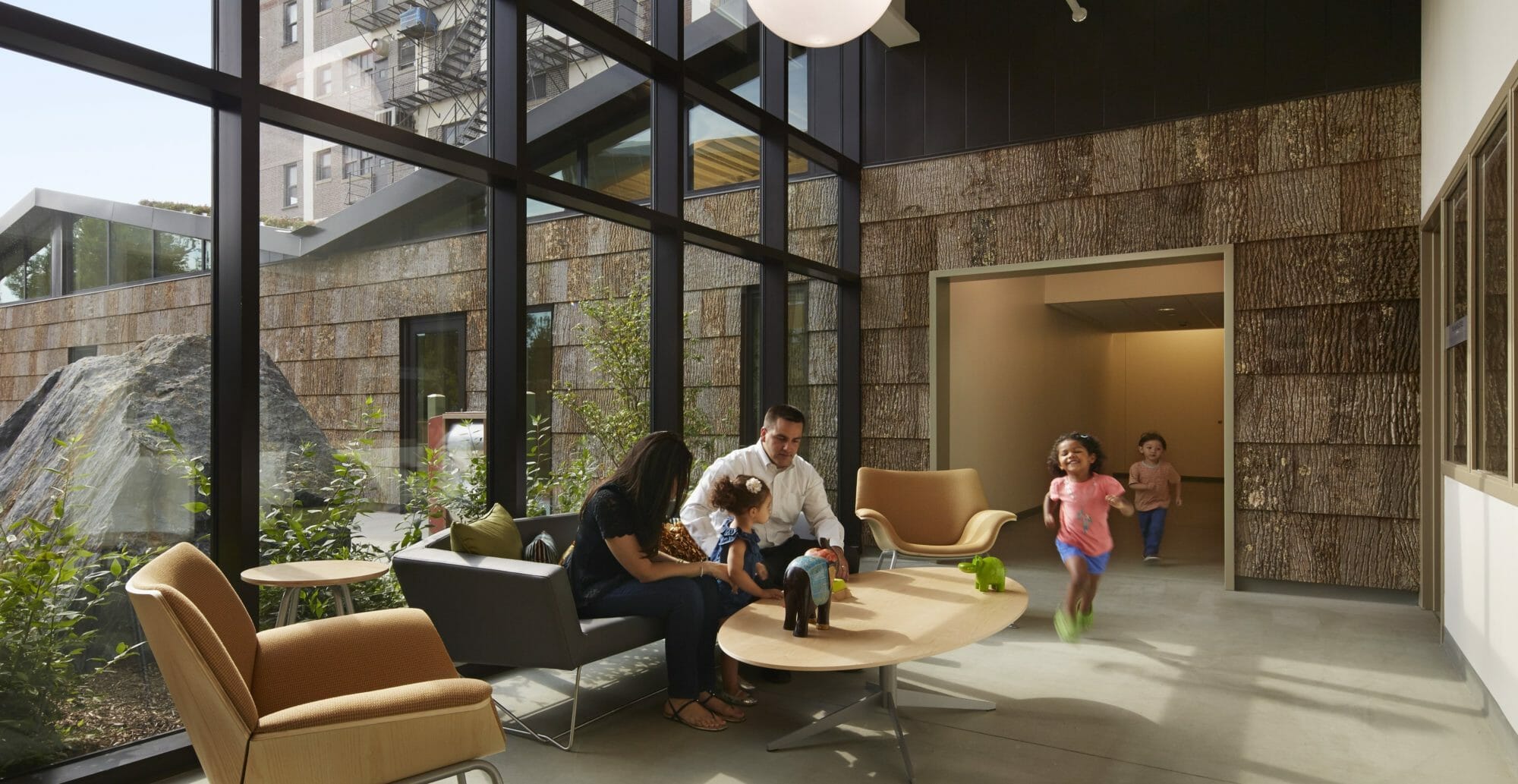Bark House
Dear Readers,
I would like to introduce you to a phenomenal business that shares the same mountain range as the Land of the Laurels, just a bit further South: Bark House. Based in Spruce Pine, North Carolina, Bark House began in 1990 by a wife and husband team~ Chris and Marty McCurry. Committed to providing sustainably sourced bark shingles for interior and exterior applications on homes and buildings, they have earned over a dozen different awards and recognitions, including but not limited to: Cradle to Cradle Platinum certification, they are a Certified B Corporation, they have had a Declare Label Red List Free for their Poplar bark shingles, and they were awarded by their local non-profit, Root Cause, as a Support of Local Wood Products Award.1
The recognition they have received globally and locally is noteworthy. However, it is just that. Noteworthy. On paper it is impressive, and it deserves to be shared…literally, worthy of noting. But the power behind this business lies not in their stamps or their certifications…or even in that Google and Amazon use their bark frequently in their establishments. The power Bark House holds, lies in the good they have done, are doing, and will continue to do for the Appalachian Mountain Range and the small communities that call it home.
Getting the Bark
Their process of obtaining the bark is based entirely off of regenerative practices~ for the environment, and their community. They began their business with the training of 50 local loggers on how to peel bark off felled trees. The loggers could then sell the trees they took down as profit, as well as the bark from those trees.
Not only was Bark House training loggers how to peel off bark in a way to maintain the bark’s resale value, they were also training loggers how to harvest trees in a way that protected forests’ health. This included training in water stewardship and small-team harvesting with lighter, less-impact equipment. Because Bark House is a big buyer of bark, they have a big say in how the trees in the Appalachian region are harvested.2
Today, Bark House continues to remain committed to their local area by maintaining loggers’ and landowners’ education in land and water stewardship, and being land and water stewards themselves. Bark House continues to do stream bank restorations and clean-ups for their local forests and they persistently monitor watershed health reports for their area.3 They also educate local loggers and land owners on the importance of water and best practices to maintain the integrity of natural waterways. Bark House is able to get down to the nitty gritty of sustainable harvesting and up close and personal with land owners and loggers because they only allow harvesting from 20 acre privately owned land tracts. This limited private land allowance for harvesting empowers local landowners to remain stewards of their own forests, while also increasing the revenue of the local loggers.
In the end, people can’t care about trees if they are struggling to feed their families…and Bark House, in their own way, is addressing that conundrum by providing a solid income for sustainable harvesting practices. They are proving that being sustainable can be synonymous with being profitable…in more ways than one. Clean water, healthy soils, thriving forests, and a self-sustaining local economy.
Poplar Bark Shingle Siding. Photo Credit: Bark House
Poplar siding can be used for both interior and exterior. Photo Credit: Bark House
Their Facility
Their factory runs 100% off of solar power. They use zero water in their manufacturing. Their efficient kiln process dries the bark. All of their panels and shingles are largely handcrafted.4
But that isn’t even the cool part.
They renovated dilapidated gas stations bordering a residential neighborhood to be their product showrooms and manufacturing facilities. What is so awesome about this, is they took hard-to-sell buildings that were falling apart, and made them into their main hub~ all the while uplifting a once-thriving mill community and the surrounding environment.
They didn’t want their facility to be an eyesore, or make too much noise for the neighbors. So, they made gardens and wandering pathways to aid in rain runoff and for general enjoyment. And, of course, they used their own bark on the exterior of their building! They also removed the seven deteriorating gas tanks that were under the street…costing them a lot of money but also saving the nearby Toe River.5
A video on how the bark is harvested, to it being shipped to you as shingles! Crafting the Perfect Poplar Bark Shingle and Panel (BARK HOUSE®) – YouTube
Overall…
William and I would love to use their poplar bark shingles on the exterior of our home. I used to make ‘fairy houses’ when I was younger, gathering bits and pieces of bark off of my family’s forest floor. To have our home, The Seed, be clad in bark (just like a tree!) would be my childhood dream realized. It would mean that I am indeed a real woodland fairy 😉
All fantasies aside6, the bark shingles make an incredible protective weather barrier, age gracefully, are insect resistant, can last well over 80 years,7 and may be a new design element to passive houses! I have not yet heard of a passive house case study that used bark siding…but if I do, I’m sure you’ll be hearing from me!
Oh, and when you are done with them and if you choose not to reuse them on another project…you can literally compost them. No chemicals go into the manufacturing process. It is just bark. Kiln dried bark. Once you remove all fasteners, you can just scatter the shingles on the forest floor and let them decompose to dirt. Or! You could let your own children make little fairy houses out of them…
However, the installation process does seem time-intensive. For prefabrication purposes, William and I are still pondering if the bark shingles would indeed be ideal. Here is an installation video of poplar bark shingles to give you an idea on how beautifully crafted they are, while also perhaps taking a while to install: Bark House Poplar Bark Shingle Siding Installation Guide 2020 – YouTube
That’s all for now friends!
Thank you for reading!!
Shelby
1. Bark House. “Certifications and Awards,” 2021. https://barkhouse.com/about-us/certifications-awards/. Accessed on 10 March 2021.
2. Bark House. “See the Benefits of Restorative Growing, Sourcing, and Harvesting,” 2021. https://barkhouse.com/mission/. Accessed on 10 March 2021.
3. Bark House e-mail correspondence. 1 November 2021.
4. Bark House. “See the Benefits of Regeneratively Aimed Manufacturing,” 2021. https://barkhouse.com/mission/. Accessed on 10 March 2021.
5. Bark House. “Our Facility,” 2021. https://barkhouse.com/our-facility/. Accessed on 10 March 2021.
6. But are they really? I could be a fairy…
7. Bark House. “Poplar Bark Shingles Siding FAQs,” 2021. https://barkhouse.com/natural-bark-wood-products/poplar-bark-shingles-siding/. Accessed on 10 March 2021.
14 Comments
Submit a Comment
© 2020 Sustaining Tree
© 2020 Sustaining Tree



851426 371186U never get what u expect u only get what u inspect 2269
170193 575651hi, your website is wonderful. I truly do a lot of thanks for operate 856453
14426 438249Hmm is anyone else having issues with the images on this blog loading? Im trying to figure out if its a difficulty on my end or if it is the weblog. Any responses would be greatly appreciated. 613107
725036 749219As I site owner I conceive the content material here is rattling outstanding , thanks for your efforts. 411833
862351 567632I was recommended this internet site by my cousin. Im not certain whether this post is written by him as nobody else know such detailed about my trouble. You are remarkable! Thanks! 124466
26647 599600Read More HERE. I bookmarked it. 551387
300014 413439Yours is a prime example of informative writing. I believe my students could learn a lot from your writing style and your content material. I may possibly share this write-up with them. 330092
784241 617305I consider something actually particular in this website . 215075
536210 730739I believe that a simple and unassuming manner of life is greatest for everybody, best both for the body and the mind. 23929
248606 927358Wonderful! This weblog looks just like my old 1! Its on a entirely different subject but it has pretty significantly exactly the same layout and style. Excellent choice of colors! 936894
529779 779413Id should consult you here. Which is not some thing Its my job to do! I spend time reading an article that may get folks to think. Also, several thanks for permitting me to comment! 716
687377 735746Outstanding post. I was checking constantly this blog and Im impressed! Very useful info specially the last part I care for such info a lot. I was seeking this specific details for a long time. Thank you and very best of luck. 341909
835371 786199You created some decent points there. I looked on the internet for that dilemma and located many people will go in addition to with the internet website. 917463
262029 894738I think other website owners should take this website as an model, extremely clean and superb user genial style and style . 891800